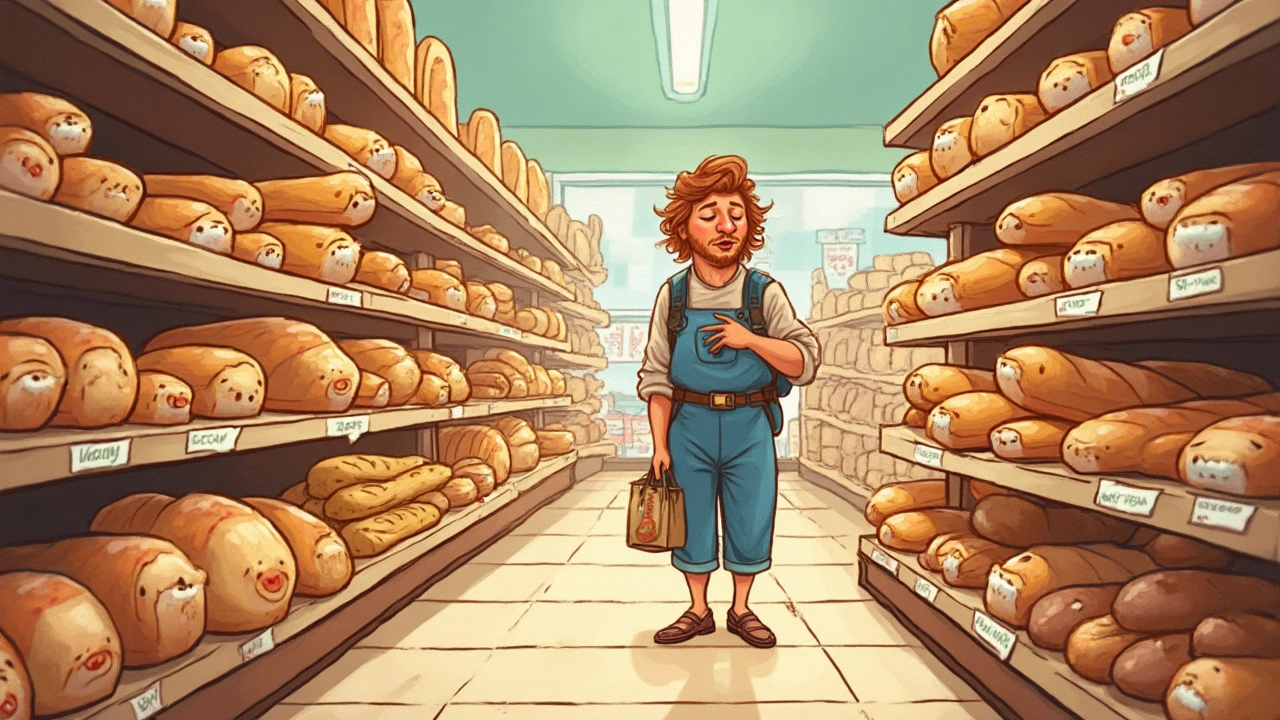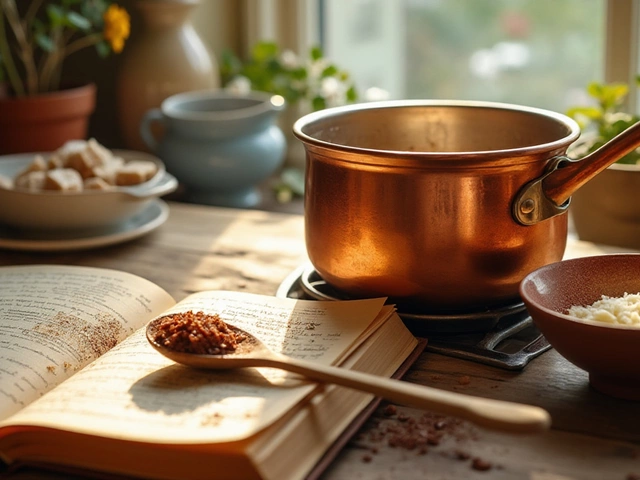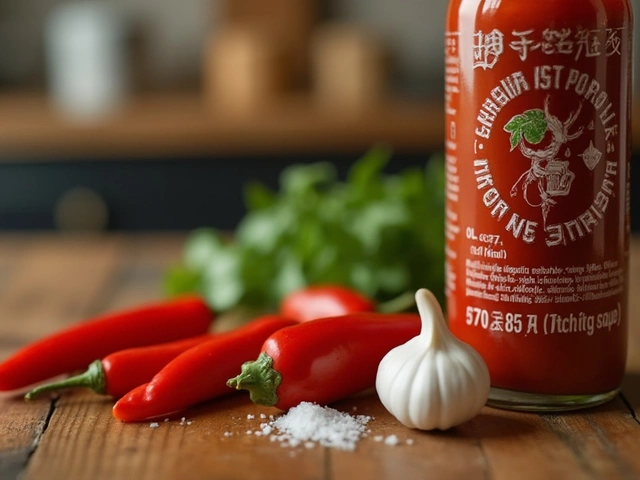So, you're staring at a wall of bread in the supermarket and wondering, what's vegan, and what's not? Bread's a staple, but those ingredient lists can be tricky, can't they? When you're living the vegan life, even something as simple as choosing bread can feel like navigating a maze.
First up, let’s clear the air: traditional bread usually comprises just flour, water, salt, and yeast. Simple, right? Well, the complexity starts with those sneaky extras. Ingredients like dairy, eggs, honey, or mysterious E-numbers sometimes creep in, potentially turning your slice of toast into a non-vegan affair.
Knowing what sets bread apart as vegan—or not—can save you loads of hassle. You’ll often find that whole grain or sourdough varieties usually pass the vegan test. But it's always worth double-checking for those hidden animal products. Dive into finding the right choices so you can enjoy your sandwich without second-guessing.
- Understanding Vegan Bread Basics
- Common Non-Vegan Ingredients in Bread
- Popular Vegan Bread Options
- Reading Labels Like a Pro
- Tasty Vegan Bread Recipes
Understanding Vegan Bread Basics
Alright, let's break down what makes bread vegan or not. At its core, most traditional breads stick to a simple recipe: flour, water, salt, and yeast. These basic ingredients are all plant-based, so if that's all you're dealing with, you're golden.
However, things aren't always that straightforward when it comes to commercially produced breads. Some breads get extra flavors, colors, or preservatives added, and that's where non-vegan ingredients like milk, eggs, or honey might sneak in.
Here's the scoop: as a rule of thumb, breads like focaccia, baguettes, and sourdough are often safe bets for vegans. They're usually made without the need for animal-derived add-ins. But, never assume! Always check the ingredient list or ask, especially if you're trying something new or different from your usual.
Watch out for sneaky ingredients. Some breads use lecithin (a common emulsifier) which is often plant-based but can sometimes come from eggs. And those soft, fluffy rolls? They may have been brushed with butter, so keep an eye out!
Understanding the basics is about knowing what to look for and what to avoid. So, when picking your vegan bread, it's all about the back of the package as much as the front. Get good at reading those labels, and you'll save yourself lots of head-scratching later on.
Common Non-Vegan Ingredients in Bread
Let's talk about the unexpected show-stealers in the bread world: the non-vegan ingredients that sneak their way into your loaf. Some of these are under-the-radar and can catch you off guard if you're trying to keep your meals strictly plant-based. So, what should you be on the lookout for?
First, there's eggs. Often used for binding or adding moisture, eggs find their way into various bread recipes, especially the richer varieties like brioche. It’s a similar story with milk and butter. These two are often employed to give bread that soft, melt-in-your-mouth feel, particularly in pastries and sweet bread varieties.
Next, watch out for honey, which is commonly added to sweeten bread. Despite its natural roots, honey is an animal product, and therefore, doesn't make the vegan cut.
Then we've got the sneaky little l-cysteine. Ever heard of it? It's an amino acid used to soften bread dough – and it’s often derived from feathers or animal hair. Yikes! While it’s not on every loaf’s ingredient list, it’s something worth remembering when you're scanning labels.
Finally, a heads-up for those labels that don't outright scream animal product. Ever notice terms like 'natural flavorings' or 'enzymes'? Sometimes these can be derived from plant-based sources, but other times, they might not be. It doesn't hurt to do a quick check on the brand’s website if you're unsure.
Keen on having the stats handy? Here’s a quick look:
| Ingredient | Common Use | Reason to Avoid |
|---|---|---|
| Eggs | Binding agent | Animal product |
| Milk | Moisture and texture | Animal-derived |
| Butter | Flavor and texture | Dairy-based |
| Honey | Sweetener | Animal product |
| L-cysteine | Dough softener | Animal-derived |
So there you have it. A little vigilance can go a long way in making sure you’re sticking to your vegan path. Keep these ingredients in mind when you’re bread shopping next.
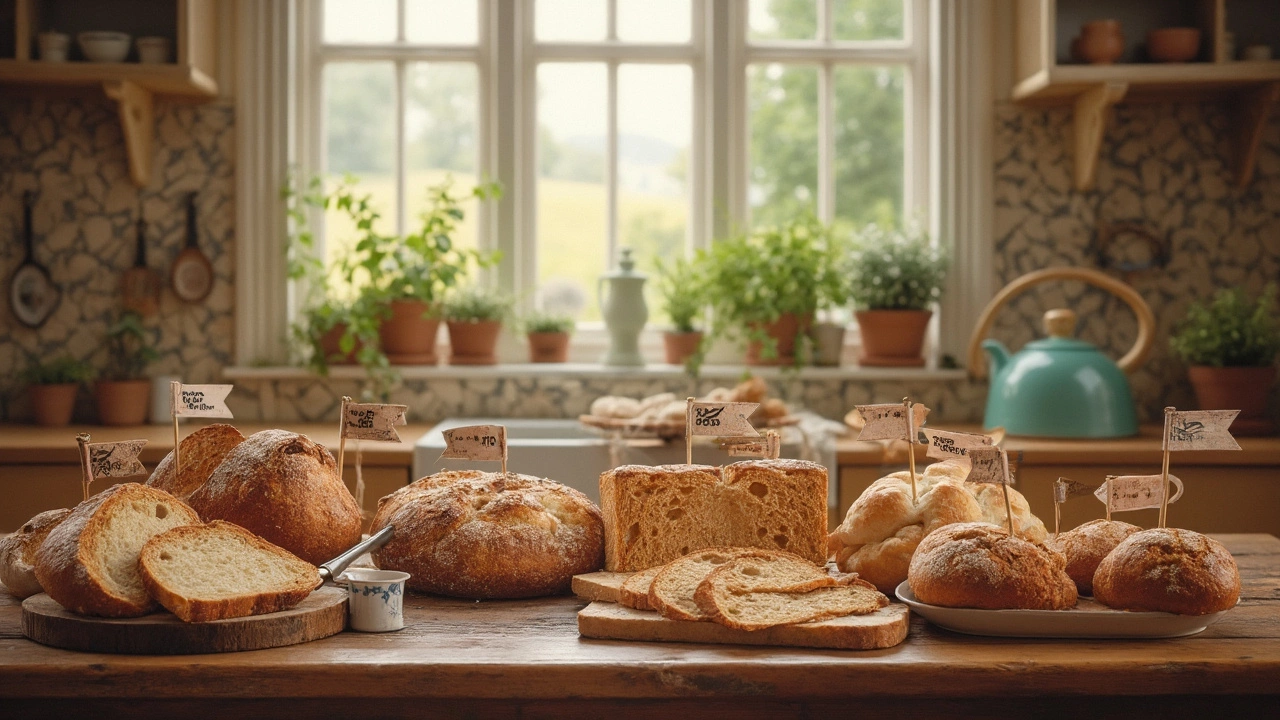
Popular Vegan Bread Options
If you're on the hunt for vegan bread, there are a bunch of tried-and-true options to consider that are not only delicious but also animal-free. Let’s break down some common bread types that usually fit the vegan bill.
First up, sourdough. This classic, tangy bread generally skips animal products in its natural form. Made from a simple mix of flour, water, salt, and wild yeast, it’s a safe bet at many bakeries. Just double-check that there's no sneaky addition of non-vegan ingredients.
Pita bread is another winner. These soft pockets are typically just a mix of flour, water, yeast, and salt. Perfect for scooping hummus or stuffing with veggies, pita is usually guilt-free and vegan-friendly.
Got a taste for rustic, hearty loaves? Whole-grain and rye bread often fit the vegan criteria. They’re packed with grains and seeds, full of flavor, and usually steer clear of animal products. Again, check the label just in case.
And if you’re into wraps or tacos, corn tortillas can be your go-to. Made from corn flour, water, and salt, they typically keep things vegan. But keep an eye out for lard, which might sneak in some traditional recipes.
- Sourdough - Tangy and traditional
- Pita Bread - Versatile and wholesome
- Whole-Grain Bread - Nutty and nutrient-packed
- Rye Bread - Dense and flavorful
- Corn Tortillas - Perfect for wraps and tacos
Before you fill your basket, here’s a tip: always read the label, even if you're buying something that seems naturally vegan. Added dairy or eggs can be hidden in the fine print, so be a savvy shopper.
Reading Labels Like a Pro
Diving into labels might seem daunting, but trust me, becoming a pro at reading labels is super empowering when you're on a vegan journey. Let's break it down so you know exactly what you're looking for the next time you're eyes-deep in the bread aisle.
The ingredient list is your best friend. The first thing to flag is any obvious animal products: eggs, milk, butter, and honey. Sometimes, it’s sneakier, involving stuff like whey, casein, or mono- and diglycerides, which could be animal-derived unless specified as plant-based.
Ingredients like L-cysteine might not ring any bells, but it's good to know it’s sometimes used in bread-making and can come from animal hair or feathers. Another one to watch out for is certain E-numbers, like E471, which again can be derived from either plants or animals.
Plant-based desserts often use these codes too, so if you're turning bread into a dessert—watch those labels closely!
- E322: Lecithins. Often vegan, but occasionally from eggs.
- E471: Mono- and diglycerides of fatty acids. Check for plant or animal origins.
- E920: L-cysteine. Used as a dough conditioner, potentially from human or animal hair.
Ingredients lists can be long and overwhelming, so here's a hot tip: the fewer the ingredients, the better for identifying vegan-friendly options.
If you’re visually inclined like me, here’s a quick cheat sheet for ingredient spotting at a glance:
| Ingredient | Check for Vegan Option |
|---|---|
| Whey | No |
| Soy Lecithin | Yes |
| Malt Extract | Yes |
| Butter | No |
| Sunflower Oil | Yes |
Once you get into the habit, it becomes second nature. Before you know it, you'll be speeding through those labels like an expert, confidently making the best choices for your vegan lifestyle!
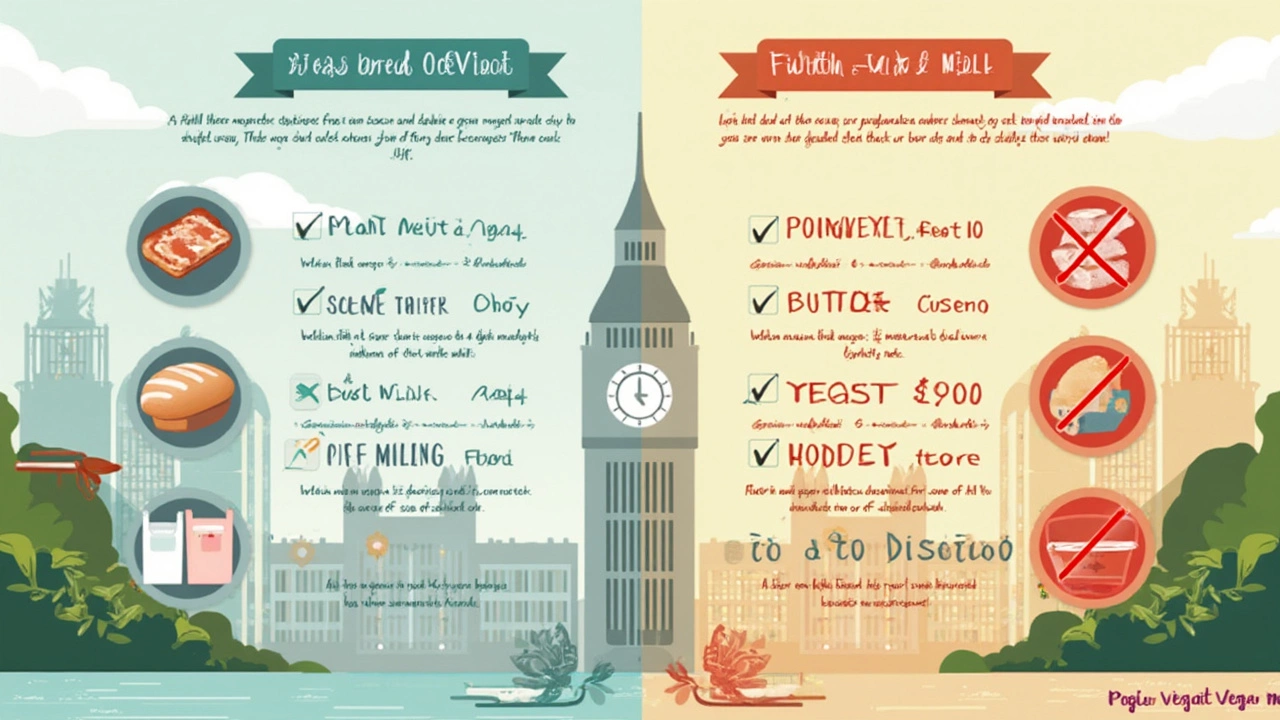
Tasty Vegan Bread Recipes
Alright, let’s get baking some vegan bread that’ll knock your socks off! You don’t need to be a pro to whip up delicious loaves without a hint of animal products. Here are some foolproof recipes to try at home that are as tasty as they are kind to the planet.
First up, we’ve got a classic: Vegan Sourdough Bread. Don’t be intimidated by the idea of a sourdough starter; it’s like having a low-maintenance pet! All you need are flour, water, and time. The natural fermentation gives it that tangy flavor we love, and best of all, it’s naturally vegan. Here’s a quick breakdown:
- Mix equal parts flour and water in a jar to start your starter. Cover it loosely and let it sit at room temperature. Feed it daily with the same mix until it’s bubbly and smells pleasantly sour.
- Combine your starter, more flour, water, and a pinch of salt. Knead until smooth, then let it rest and rise.
- Bake in a preheated oven until golden brown, and voilà, fresh sourdough ready to grace your table!
If you’re more into something quick and simple, try this Vegan Banana Bread recipe:
- Mash two ripe bananas and mix them with half a cup of almond milk and one-third cup of maple syrup.
- Add two cups of flour, one teaspoon of baking powder, and a pinch of salt. Mix until smooth.
- Bake for about an hour at 350°F (175°C), checking with a toothpick to make sure it's done.
This vegan banana bread is perfect for breakfast or a snack, and it's sure to please everyone—vegan or not.
Curious about some options to spruce up your vegan bread? Here’s a table of popular mix-ins and their benefits:
| Ingredient | Benefit |
|---|---|
| Chia Seeds | High in Omega-3s and fiber, great for a nutritional boost. |
| Cranberries | Adds a sweet tang and are rich in antioxidants. |
| Sunflower Seeds | Packed with essential nutrients and a nice crunch. |
Whether you're a casual baker or just trying to survive without spending too much on store-bought vegan bread, these recipes are a good place to start. Enjoy experimenting with ingredients, and don't be afraid to get creative—all within the vegan realm!

